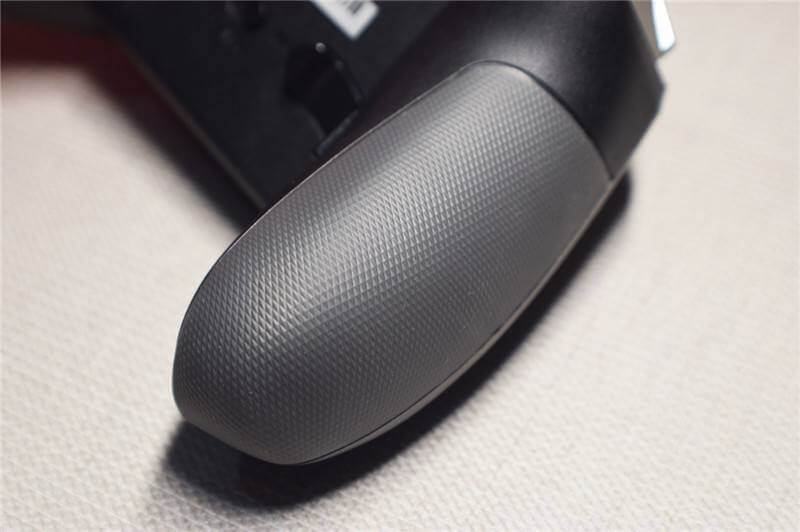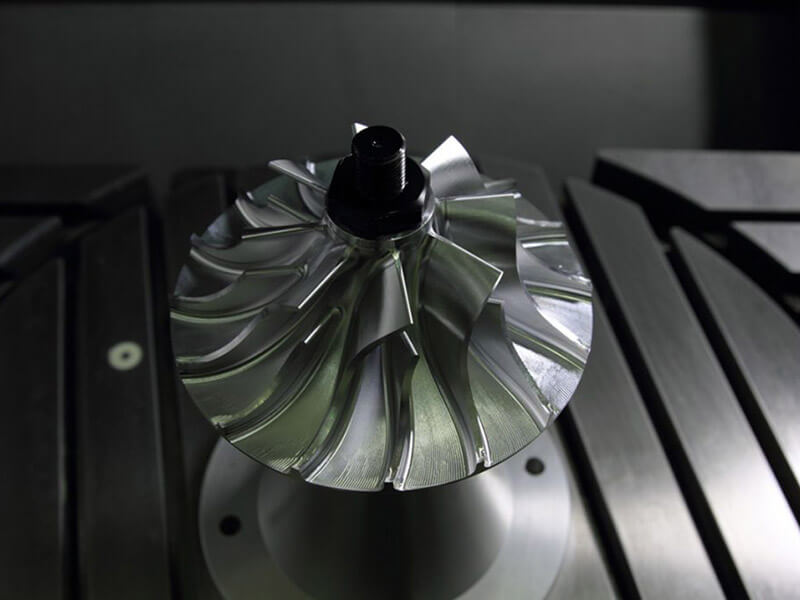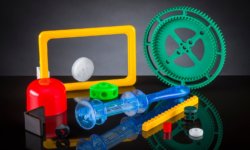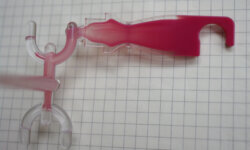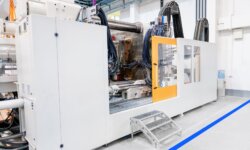Overmolding, the process of molding one material over a substrate made from another material, is a highly useful form of multi-material plastic injection molding. By combining soft and hard materials, overmolding makes it possible to make durable tools with soft hand grips, industrial components with built-in seals, and parts with high-friction surfaces.
However, before making parts with this process, it is vital to understand overmolding material compatibility. The best overmolded parts have a strong chemical bond between the substrate material and the overmolding material, but not all overmolding material combinations can produce such a bond. Furthermore, certain materials should never be combined within a single mold, as they can cause a dangerous chemical reaction.
This article serves as a quick guide to overmolding material compatibility, looking at which hard materials pair well with which soft materials and vice versa.
Is chemical bonding important for overmolding?
Overmolding is one of the most efficient molding processes for creating multi-material injection molded parts. Instead of assembling two or more components together — adding time and cost to production of the part — overmolding adds a second molding material directly over a molded substrate.
The overmolding process differs from two-shot injection molding, another type of multi-material molding, in that two separate molds are used: one to form the substrate and another to form the overmold. It therefore requires more manual intervention than two-shot injection molding but can be used with cheaper equipment.
A key advantage of overmolding is the chemical bond that can be formed between two compatible materials. By using an overmolding material that is chemically compatible with the substrate material, a strong bond will form at the the adjoining surfaces, eliminating the need for adhesives or fasteners and creating a strong, permanent bond.
It is also possible to carry out overmolding with two materials that do not chemically bond. However, in these instances, the part must be designed so the two components will join mechanically — for example, with undercuts that will physically lock the overmold material in place. This limits design freedom and creates a less secure bond.
Some overmolded parts will have both a chemical and mechanical bond to maximize the product lifespan.
Substrates and suitable overmold materials
So which overmold materials can be used with which substrate materials? This depends on a few factors, including the type of part being made and the type of bond required between the two materials.
For all overmolded parts, it is important that the substrate material has a higher glass transition temperature than the overmolding material. Otherwise, the substrate material will deform or melt within the second mold as the hot overmold material is being injected onto, into, or around the substrate.
To create a chemical bond between the two materials, a chemically compatible overmold material must be chosen. Many rigid materials will bond well with certain types of thermoplastic polyurethane (TPU), while materials like ABS and PP are compatible with a wider range of soft overmold materials.
Chemical compatibility is about more than just creating a strong bond, however. In some cases, attempting to use two incompatible materials within a mold can cause the release of toxic fumes, a dangerous buildup of pressure, or an explosion.
Some injection molding materials do not bond well with other plastics and are therefore only suitable for mechanical bonding, not chemical bonding.
ABS
Bonds with: TPU, TPE, PVC
ABS, highly impact-resistant and commonly used in injection molding for parts like handheld devices, is one of the best rigid thermoplastics for overmolding due to its high level of compatibility with both rigid and soft materials. When used as a substrate, it can bond well with flexible materials like TPU, TPE, and PVC, as well as other rigid materials like PC, nylon, and polystyrene.
PC
Bonds with: TPU
Strong, dimensionally stable, and very resistant to impact, PC is a popular injection molding material for transparent or opaque parts like lenses and medical devices. When combined with a soft TPU overmold material, it can also be a useful substrate for overmolding. PC can also chemically bond with several hard plastics like ABS, PET, and PEI.
Nylon
Bonds with: TPU, LSR
Nylon is a useful molding plastic due to its chemical resistance, strength, and many different varieties. Nylons like PA6, PA11, and PA12 can make good overmolding substrates for a variety of overmolded parts. Such materials can bond with various TPU varieties and also work well with a liquid silicone rubber (LSR) overmold.
PMMA
Bonds with: TPU
PMMA or acrylic is another versatile transparent plastic for injection molding due to its scratch resistance and optical clarity. When used as a substrate material, it can chemically bond with certain TPUs. PMMA also bonds well with ABS, which may be useful when making a partially opaque, partially transparent part.
PP
Bonds with: TPU, TPE, TPV
Polypropylene is a widely used injection molding material for parts like living-hinge packaging lids due to its flexibility, impact resistance, and low cost. It is compatible with a wide range of soft overmold materials, including TPU, TPE, and TPV.
Hard-to-bond materials
Some injection molding plastic substrate materials do not chemically bond well to any soft overmold materials, and are better suited to other forms of assembly such as fasteners. Likewise, some flexible materials, particularly thermosets like liquid silicone rubber, are generally better suited to mechanical bonds than chemical ones.
Rigid materials that will not chemically bond with flexible overmold materials include:
- POM/Acetal/Delrin
- PEEK
- PEI
In some cases, combining materials can be dangerous. POM, for example, should never be overmolded with materials PVC or TPV, as the chemical reaction created can cause the release of deadly hydrochloric acid and an explosion.
3ERP has years of experience creating injection molded parts for a range of customers. We can fulfill injection molding orders of all sizes, from 100 prototypes to full production of millions of units. We also offer a reliable overmolding and insert molding service for multi-material parts. Contact us for a free quote.
